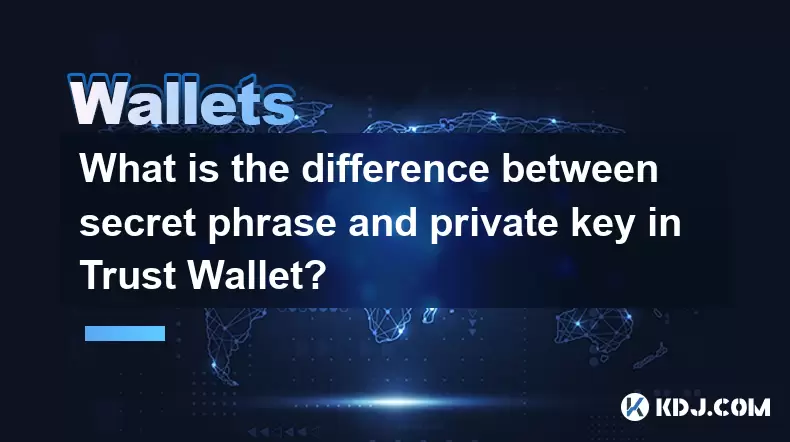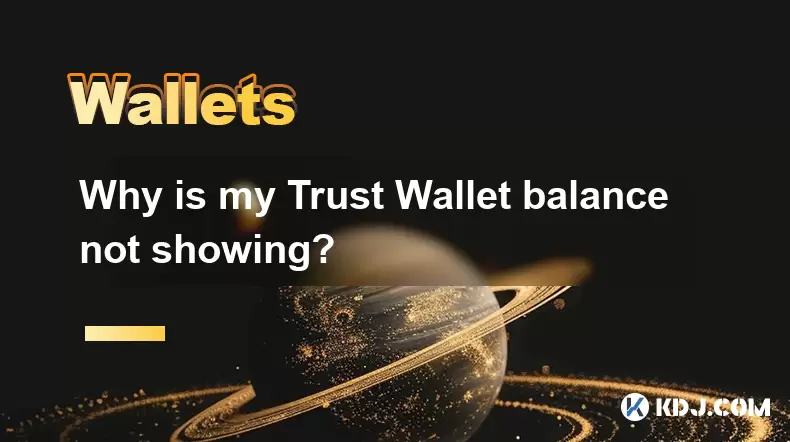-
 Bitcoin
Bitcoin $113900
-1.39% -
 Ethereum
Ethereum $3517
-4.15% -
 XRP
XRP $3.009
1.59% -
 Tether USDt
Tether USDt $0.9997
-0.04% -
 BNB
BNB $766.8
-1.41% -
 Solana
Solana $164.6
-2.38% -
 USDC
USDC $0.9998
-0.02% -
 TRON
TRON $0.3277
0.65% -
 Dogecoin
Dogecoin $0.2023
-1.67% -
 Cardano
Cardano $0.7246
0.05% -
 Hyperliquid
Hyperliquid $38.27
-4.77% -
 Sui
Sui $3.528
-0.52% -
 Stellar
Stellar $0.3890
-0.73% -
 Chainlink
Chainlink $16.16
-2.69% -
 Bitcoin Cash
Bitcoin Cash $539.9
-4.38% -
 Hedera
Hedera $0.2425
-2.00% -
 Avalanche
Avalanche $21.71
-0.97% -
 Toncoin
Toncoin $3.662
5.73% -
 Ethena USDe
Ethena USDe $1.000
-0.02% -
 UNUS SED LEO
UNUS SED LEO $8.964
0.35% -
 Litecoin
Litecoin $107.7
2.33% -
 Shiba Inu
Shiba Inu $0.00001223
-0.40% -
 Polkadot
Polkadot $3.617
-0.97% -
 Uniswap
Uniswap $9.052
-2.49% -
 Monero
Monero $295.1
-3.79% -
 Dai
Dai $0.9999
0.00% -
 Bitget Token
Bitget Token $4.315
-1.85% -
 Pepe
Pepe $0.00001060
0.11% -
 Cronos
Cronos $0.1342
-2.72% -
 Aave
Aave $256.0
-0.87%
How to solve MetaMask transaction failure? Can the funds be recovered?
MetaMask transaction failures can result from network congestion, insufficient gas, or incorrect parameters; troubleshooting involves checking status, adjusting gas, and verifying details.
May 16, 2025 at 01:42 am

Understanding MetaMask Transaction Failures
When using MetaMask, one of the most popular Ethereum wallets, users might occasionally encounter transaction failures. These failures can be frustrating, especially if they involve significant amounts of cryptocurrency. Understanding the reasons behind these failures is crucial to resolving them and potentially recovering any lost funds. Transaction failures in MetaMask can stem from various issues, including network congestion, insufficient gas, or incorrect transaction parameters.
Common Causes of Transaction Failures
There are several common reasons why transactions might fail in MetaMask. Network congestion occurs when too many transactions are trying to be processed at once, leading to delays or failures. Insufficient gas is another frequent issue; if the gas limit or gas price is set too low, the transaction might not be processed. Incorrect transaction parameters, such as sending to an invalid address or using the wrong network, can also cause failures. Understanding these causes is the first step in troubleshooting and resolving the issue.
Steps to Troubleshoot Transaction Failures
To address a transaction failure, follow these detailed steps:
Check the Transaction Status: Open MetaMask and go to the 'Activity' tab to see if the transaction is still pending or has failed. If it's pending, you might need to wait for the network to process it.
Verify Network Congestion: Use tools like Etherscan to check the current network status. If the network is congested, you might need to wait for it to clear or increase your gas price to prioritize your transaction.
Adjust Gas Settings: If the transaction failed due to insufficient gas, increase the gas limit and gas price. In MetaMask, when you're about to send a transaction, you can adjust these settings manually. Click on 'Edit' next to the gas fee, and adjust the 'Gas Limit' and 'Gas Price' to higher values.
Check Transaction Parameters: Ensure that you're using the correct network (e.g., Ethereum Mainnet, Ropsten Testnet) and that the recipient address is valid. Double-check all transaction details before resubmitting.
Resubmit the Transaction: If the issue was resolved, you can resubmit the transaction with the new settings. In MetaMask, go to the 'Activity' tab, find the failed transaction, and click 'Speed Up' or 'Cancel' to adjust and resubmit.
Recovering Lost Funds from Failed Transactions
In some cases, it might be possible to recover funds from a failed transaction. If the transaction failed due to insufficient gas, the funds should return to your wallet automatically. However, if the transaction was successful but the recipient did not receive the funds, you might need to contact the recipient or the platform involved to resolve the issue.
For transactions stuck in a pending state, you can attempt to speed up or cancel the transaction. In MetaMask, go to the 'Activity' tab, find the pending transaction, and click 'Speed Up' to increase the gas price or 'Cancel' to stop the transaction. If the transaction is successfully canceled, the funds should return to your wallet.
Preventing Future Transaction Failures
To minimize the risk of future transaction failures, consider the following best practices:
Monitor Network Conditions: Before sending a transaction, check the current network status using tools like Etherscan. If the network is congested, consider waiting or adjusting your gas settings accordingly.
Set Appropriate Gas Fees: Always set a gas price that is competitive enough to ensure your transaction is processed promptly. Use gas price estimators like EthGasStation to find an optimal gas price.
Double-Check Transaction Details: Before confirming a transaction, verify the recipient address, network, and all other transaction parameters to avoid errors.
Use Test Transactions: If you're unsure about the transaction settings, perform a small test transaction first to ensure everything works as expected.
Frequently Asked Questions
Q: Can a transaction fail after it has been confirmed on the blockchain?
A: Once a transaction is confirmed on the blockchain, it is considered final and cannot fail. However, if the transaction was processed incorrectly due to an error in the smart contract or other issues, you might need to contact the recipient or platform to resolve the issue.
Q: What should I do if my transaction is stuck in a pending state for a long time?
A: If your transaction remains pending for an extended period, you can try to speed it up by increasing the gas price or cancel it if possible. In MetaMask, go to the 'Activity' tab, find the pending transaction, and click 'Speed Up' or 'Cancel' to adjust and resubmit.
Q: Is it possible to recover funds from a transaction that was sent to the wrong address?
A: Unfortunately, if you send funds to the wrong address, it is generally not possible to recover them. Cryptocurrency transactions are irreversible, so it's crucial to double-check the recipient address before sending any funds.
Q: How can I ensure my transactions are processed quickly during times of high network congestion?
A: To ensure quick transaction processing during high network congestion, set a higher gas price than the current average. Tools like EthGasStation can help you find an optimal gas price to prioritize your transaction.
Disclaimer:info@kdj.com
The information provided is not trading advice. kdj.com does not assume any responsibility for any investments made based on the information provided in this article. Cryptocurrencies are highly volatile and it is highly recommended that you invest with caution after thorough research!
If you believe that the content used on this website infringes your copyright, please contact us immediately (info@kdj.com) and we will delete it promptly.
- CoinDCX, Coinbase, and Cyber Heists: A Crypto Rollercoaster
- 2025-08-02 14:30:12
- Solana, Axiom Exchange, and Revenue: Navigating the Future of DeFi
- 2025-08-02 12:50:12
- Metaplanet's Bitcoin Treasury Move: A Bold Bet or Risky Gamble?
- 2025-08-02 14:30:12
- Cardano (ADA) and Altcoin Gains: Navigating the Crypto Landscape
- 2025-08-02 12:55:11
- Bitcoin, MicroStrategy, and Crypto Taxonomy: Decoding the Future of Digital Assets
- 2025-08-02 14:50:11
- Bitcoin's Bearish Momentum: Fakeout or the Real Deal?
- 2025-08-02 12:30:12
Related knowledge

What is a watch-only wallet in Trust Wallet?
Aug 02,2025 at 03:36am
Understanding the Concept of a Watch-Only WalletA watch-only wallet in Trust Wallet allows users to monitor a cryptocurrency address without having ac...

How to switch between networks in Trust Wallet?
Aug 02,2025 at 12:36pm
Understanding Network Switching in Trust WalletSwitching between networks in Trust Wallet allows users to manage assets across different blockchains s...

How to check my full transaction history on Trust Wallet?
Aug 02,2025 at 09:24am
Understanding Transaction History in Trust WalletTrust Wallet is a widely used non-custodial cryptocurrency wallet that supports a broad range of bloc...

Why is my Trust Wallet balance zero?
Aug 02,2025 at 03:49am
Understanding Trust Wallet Balance Display IssuesIf you're seeing a zero balance in your Trust Wallet despite knowing you've previously received or se...

What is the difference between secret phrase and private key in Trust Wallet?
Aug 02,2025 at 09:49am
Understanding the Role of a Secret Phrase in Trust WalletThe secret phrase, also known as a recovery phrase or seed phrase, is a sequence of 12 or 24 ...

Why is my Trust Wallet balance not showing?
Aug 02,2025 at 06:01am
Understanding Trust Wallet Balance Display IssuesMany users encounter the issue where their Trust Wallet balance is not showing despite having previou...

What is a watch-only wallet in Trust Wallet?
Aug 02,2025 at 03:36am
Understanding the Concept of a Watch-Only WalletA watch-only wallet in Trust Wallet allows users to monitor a cryptocurrency address without having ac...

How to switch between networks in Trust Wallet?
Aug 02,2025 at 12:36pm
Understanding Network Switching in Trust WalletSwitching between networks in Trust Wallet allows users to manage assets across different blockchains s...

How to check my full transaction history on Trust Wallet?
Aug 02,2025 at 09:24am
Understanding Transaction History in Trust WalletTrust Wallet is a widely used non-custodial cryptocurrency wallet that supports a broad range of bloc...

Why is my Trust Wallet balance zero?
Aug 02,2025 at 03:49am
Understanding Trust Wallet Balance Display IssuesIf you're seeing a zero balance in your Trust Wallet despite knowing you've previously received or se...

What is the difference between secret phrase and private key in Trust Wallet?
Aug 02,2025 at 09:49am
Understanding the Role of a Secret Phrase in Trust WalletThe secret phrase, also known as a recovery phrase or seed phrase, is a sequence of 12 or 24 ...

Why is my Trust Wallet balance not showing?
Aug 02,2025 at 06:01am
Understanding Trust Wallet Balance Display IssuesMany users encounter the issue where their Trust Wallet balance is not showing despite having previou...
See all articles

























































































